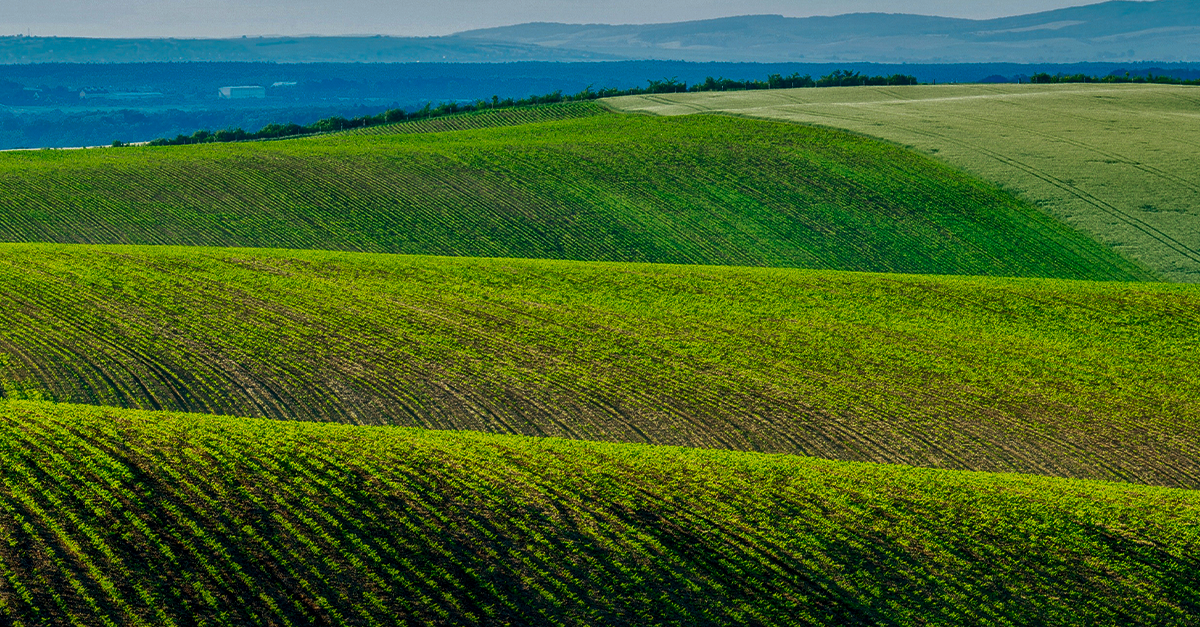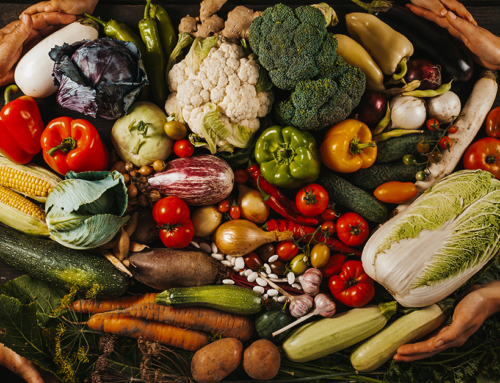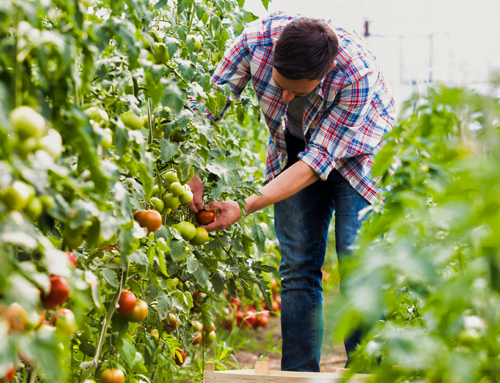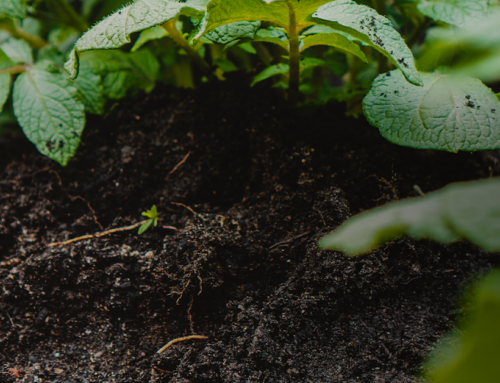With alarmingly increasing soil degradation globally, it is imperative to acknowledge the role soil microbiome plays in restoring soil functionality and suitability for sustainable agriculture.

Source: Pixabay.
Soil biodiversity plays a crucial role in sustaining most life forms. Microbiome, a term used to define a community of all tiny organisms not visible to the naked eye, accounts for about 60%- 80% of soil biological processes such as biogeochemical cycles of soil nutrients. Microbes communicate and work together to ensure nutrient availability translating to a self-sustainable agroecosystem.
With recent advances in molecular techniques, scientists are beginning to decipher the diversity and role of the soil microbiome.
How do they do it?
The soil food web plays an intricate role in the cycle of nutrients. To articulate my thought process more clearly and give an in-depth understanding of the different types of microorganisms and their respective roles in improving soil health, let me put it in the following way.
- Cleaners: Microorganisms under this category are involved in the decomposition of soil organic matter. They can be used in bioremediation of soil rendered infertile due to synthetic fertilizers;
- Fixers: These microorganisms can convert atmospheric Nitrogen into a more usable form to be taken up by plants and other microorganisms;
- Extractors:These microorganisms – such as Mycorrhizae – are very tiny. They penetrate small spaces that plant roots cannot pass through or reach and extract nutrients such as calcium, Phosphorus among others, making it bioavailable to plants.

Globally, it is estimated that 3.6 billion tons of crop residues are produced annually. They are a source of soil nutrient cycling with the aid of decomposer microorganisms.
Source: Pixabay.
The cleaners
When dead and decaying matter such as animal and crop residues, leaf litter, wood chips, and living soil microorganisms are combined, they make up the Soil organic matter (SOM).
Decomposer microorganisms feed on the SOM by secreting enzymes that break down complex organic matter such as cellulose and chitin into soluble compounds that can be easily absorbed by plants.
Nutrients such as Carbon, Nitrogen, Potassium, are released back into the soil, an important step in the recycling of soil nutrients. During this process, microbes utilize some Carbon molecules and ‘breathe out’ carbon dioxide, completing the carbon cycle.
Some organic compounds produced during the decomposition, bind together (aggregates) with the remaining carbon molecules. Soil aggregation is essential for water retention and air circulation. The remaining SOM that does not undergo decomposition forms the soil organic carbon (SOC), visualized as the dark-colored appearance of the soil.
When SOC remains in the soil for a long duration, it binds together to other nutrients and becomes stable, forming humus which many farmers associate with soil fertility. The amount of soil organic carbon stored depends on different factors ranging from soil type to land management practices.
We all know that plants are immobile, but how do they get the nutrients available in the soil for metabolism and growth?
The Fixers

Plants “talk” to soil microbes by exuding molecular signals to the soil. Plant microbial interaction begins in the rhizosphere. This is a region where plant roots are surrounded by soil known to host the majority of soil microorganisms.
Some plants release signals that are host-specific (similar to speaking the same language) attracting specific microorganisms to plant roots. Whereas other plants exudate signals that attract a wide range of microorganisms. Microbes respond by either attaching themselves to the roots or entering the plant root cells.
Source: Pixabay.
An advantage of beneficial bacteria on the plant root surface is that they form biofilm. This is a slimy coating layer whose role is to defend the host plants from environmental stressors such as drought and disease-causing microorganisms in a process known as biocontrol. In return, they obtain energy from glucose derived from the photosynthetic process of plants.
Here comes the natural fertilizer!
Interestingly, the atmosphere stores approximately 78% of Nitrogen in gaseous form. This gaseous Nitrogen cannot be absorbed directly by plants due to its strong bonds. It takes the intervention of specific soil microorganisms to fix Nitrogen in the soil.
Nitrogen-fixing bacteria can be free-living, act independently in the soil. Others form a symbiotic relationship. For example, Rhizobium sp. penetrate the root of leguminous plants stimulating plant cells to undergo cell division leading to forming nodules. These are visible structures found on the rooting of legumes such as clover, cowpea, beans, and alfalfa. These Nitrogen-fixing bacteria take Nitrogen gas from the atmosphere and convert it to ammonium, making it available for plants and other soil microorganisms.
Exhausters
These microorganisms include motile-free living bacteria to mycorrhizae fungi which bring nutrients to the plant. They can grow in spaces where nutrients and water have been stored in soil organic matter. Other roles include:
- The growth of hyphal tips through weak spots on rocks initiates the breakdown of rocks releasing nutrients such as Phosphorus, Calcium, Potassium;
- Reduce weed growth due to competition for nutrients;
- Arbuscular mycorrhizal fungi (AMF) produce a substance known as glomalin. This improves soil fertility and prevents soil erosion;
- Have a high-water retention ability able to supply plants with water during dry periods.
How do we restore the soil microbiome?
Simple!
- Create awareness of soil biodiversity;
- Feed the soil with organic amendments such as crop residues compost, Vermicompost, and Biochar;
- Kick start degraded soil by applying a mixture of bacteria and fungi;
- Provide shelter to microbes by planting cover crops;
- Resist agricultural practices that disrupt the soil microbial community.
Restoring soil will be instrumental in attaining the UN’s Sustainable Development Goals (SDGs). Healthy soil biodiversity will increase food security by improving plant yields. It will take a collaborative effort from different stakeholders such as scientists, the government, industries, farmers, and each individual to restore soil biodiversity.
Below, there are some other articles that you might be interested in:
- How do soil organisms drive soil water availability?
- Biochar: understanding its use and benefits
- Nature-based solutions: The Key to sustainable agriculture
About the author
Loraine Chivingo Kabaka is a Chloride Free Volunteer and an Environment Microbiology graduate student at Kenyatta University Kenya. She is a member of the Global Soil Biodiversity Initiative, a United Nations Volunteer for an Urban Gardening project for an organization Known as CAMAAY in Cameroon, and a 2022 mentee at the CoalitionWILD Global Mentorship Program. She has also les grassroots youth groups in restoring their land and increasing food production.





Leave A Comment